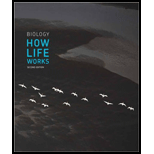
Concept explainers
To determine:
The ways in which spores are similar to gametes and the way in which spores are different from gametes.
Introduction:
Gametes are the sex cells that have only one set of chromosomes which are not similar to each other. For the formation of an organism, a diploid set or double set of chromosomes are needed. In an organism the sex cells are haploid that is they contain only one set of chromosomes.
Spores are reproductive cells that are able to form a new organism, but they do not need to fuse with other spore which was in the case of gametes in which they need to fuse with other gamete to form a zygote.
Explanation of Solution
There are some similarities and some differences between a spore and a gamete. They are as follows:
Similarities:
The similarities between the spore and gametes are as follows:
1. Spores and gametes both are haploid that is both have single set of chromosomes.
2. Both, gametes and spores are unicellular.
3. Both the cells are produced by meiosis process which results in the generation of cells that are haploid.
4. Both the cell types are involved in the formation of a new organism.
5. Both the cells are sex cells.
Differences:
The differences between the spores and the gametes are as follows:
| Spores | Gametes |
| 1. They are used in both types of reproduction – sexual and asexual (as in case of ascospores, zygospores). | 1. They are used only in the case of sexual reproduction |
| 2. Vascular plants which are capable of producing spores can be differentiated into homosporous and heterosporous plants. | 2. Gametes can be divided into isogamy and anisogamy. |
| 3. They germinate independently to form a sporeling. | 3. Gametes need to fuse with other gamete to form a zygote. |
| 4. They are able to survive in conditions that are not favorable. | 4. Pollens which are a type of gamete are able to survive in unfavorable conditions. |
Spores and gametes are haploid sex cells that participate in the formation of a new organism and are formed by reductional division method or meiosis process. The basic differences between the spores and gametes are that the gametes are able to germinate on their own, while the gametes fuse before they form zygote.
Want to see more full solutions like this?
Chapter 30 Solutions
Biology: How Life Works 2e & LaunchPad for Biology: How Life Works (Twenty-Four Month Access)
 Human Anatomy & Physiology (11th Edition)BiologyISBN:9780134580999Author:Elaine N. Marieb, Katja N. HoehnPublisher:PEARSON
Human Anatomy & Physiology (11th Edition)BiologyISBN:9780134580999Author:Elaine N. Marieb, Katja N. HoehnPublisher:PEARSON Biology 2eBiologyISBN:9781947172517Author:Matthew Douglas, Jung Choi, Mary Ann ClarkPublisher:OpenStax
Biology 2eBiologyISBN:9781947172517Author:Matthew Douglas, Jung Choi, Mary Ann ClarkPublisher:OpenStax Anatomy & PhysiologyBiologyISBN:9781259398629Author:McKinley, Michael P., O'loughlin, Valerie Dean, Bidle, Theresa StouterPublisher:Mcgraw Hill Education,
Anatomy & PhysiologyBiologyISBN:9781259398629Author:McKinley, Michael P., O'loughlin, Valerie Dean, Bidle, Theresa StouterPublisher:Mcgraw Hill Education, Molecular Biology of the Cell (Sixth Edition)BiologyISBN:9780815344322Author:Bruce Alberts, Alexander D. Johnson, Julian Lewis, David Morgan, Martin Raff, Keith Roberts, Peter WalterPublisher:W. W. Norton & Company
Molecular Biology of the Cell (Sixth Edition)BiologyISBN:9780815344322Author:Bruce Alberts, Alexander D. Johnson, Julian Lewis, David Morgan, Martin Raff, Keith Roberts, Peter WalterPublisher:W. W. Norton & Company Laboratory Manual For Human Anatomy & PhysiologyBiologyISBN:9781260159363Author:Martin, Terry R., Prentice-craver, CynthiaPublisher:McGraw-Hill Publishing Co.
Laboratory Manual For Human Anatomy & PhysiologyBiologyISBN:9781260159363Author:Martin, Terry R., Prentice-craver, CynthiaPublisher:McGraw-Hill Publishing Co. Inquiry Into Life (16th Edition)BiologyISBN:9781260231700Author:Sylvia S. Mader, Michael WindelspechtPublisher:McGraw Hill Education
Inquiry Into Life (16th Edition)BiologyISBN:9781260231700Author:Sylvia S. Mader, Michael WindelspechtPublisher:McGraw Hill Education





